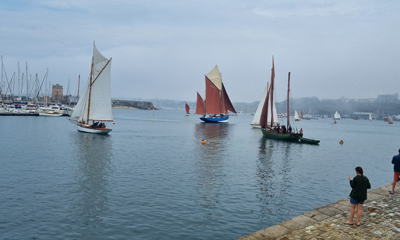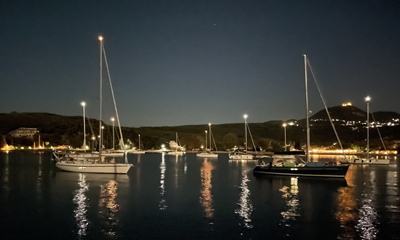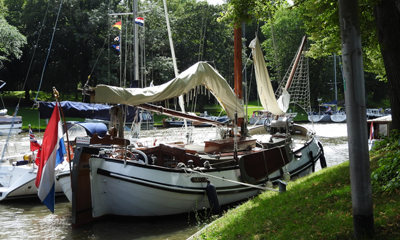Sailing the Baltic
13 May 2025
Introduction
This page introduces the Baltic Cruising area, a popular destination for many sailors.
Jump to content
Why go to the Baltic?
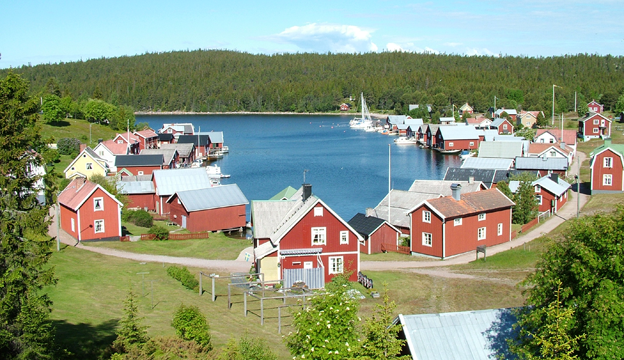
Trysunda, High Coast, Sweden
30 years ago this was rather unknown territory; Russia had controlled much of the eastern Baltic and almost no western sailors visited. However since the collapse of the Soviet system enormous changes have taken place.
Yachting has become possible for thousands of local inhabitants leading to an explosion of local boats and many new marina facilities.
Yachting facilities in Poland, Lithuania, Latvia and Estonia have changed beyond all recognition.
Although Norway, Sweden, Finland, Denmark and western Germany were open to visitors it was not until the eastern Baltic opened up that there was a general influx of yachtsmen from the rest of the world.
Despite these changes the area still carries an atmosphere of mystery to many first-time visitors.
Around the Baltic there are 9 countries to visit (perhaps there will again be 10?). Each country has its own separate identity, history, culture and language.
The greatest similarities are in the Scandinavian countries of Norway, Sweden and Denmark and these northern countries are more sparsely populated than those to the south. English is widely spoken throughout the area.
Getting there
Access to the Baltic Sea is usually via either the Kiel Canal or the Skaggerak/Kattegat route though there are possibilities for unmasted craft via the inland waterways of Europe.
There are distinct geographical differences - rocky shores and archipelagos of islands to the north and vast sandy shores to the south.
The North Sea coasts of Norway, Denmark and Germany are tidal but once inside the Baltic there are no tides though there are currents. Atmospheric pressure and strong winds cause water levels to rise and fall by significant amounts.
When to go
In winter ice forms in the northern Baltic and yachting is a summer pursuit only. All around the Baltic almost all boats are brought ashore for the winter, many stored out of doors but sheds (some heated) can be hired.
Summer weather in the Baltic is usually pleasant and can be very hot although the length of the season is limited the further north one travels.
Summer days have long hours of daylight meaning the need for night sailing is rare. Weather forecasts can usually be obtained in the English language in all countries.
The opportunities are limitless
Yachtsmen have a choice of longer journeys e.g. from Sweden across to Latvia or Estonia, or short coastal hopping. There are plenty of good harbours and marina facilities and almost limitless opportunities to anchor in the archipelagos of Sweden and Finland.
The German Baltic coast presents a mixture of open low lying sandy shores with well established harbours and, particularly in the east, more sheltered coasts leading to the Polish border.
The Polish coast is exposed and there are dangers entering and leaving harbours in strong on-shore winds. It is important to check weather forecasts.
Lithuania has only one harbour at the port of Klaipėda but this gives access to the fairly shallow Curonian Lagoon where there are small harbours to explore. Further north the Latvian Baltic coast has major ports at Liepāja and Ventspils with charming Pāvilosta lying between.
Further north yachts can turn to starboard via the Irbensky Strait to visit the Gulf of Rīga with its several harbours and the glorious city of Rīga before continuing northwards to Estonia.
The west coast of Estonia has a number of attractive islands well worth visiting. On the northern coast lies Tallinn, the Estonian capital, but there are other small harbours dotted along the northern shore as far as the Russian border.
Crossing to Finland the sandy southern Baltic is exchanged for rocky shores and archipelagos, somewhere to spend a lifetime exploring. The archipelago continues westwards along the southern shores of Finland and northwards into the Gulf of Bothnia extending as far as Rauma.
Beyond Rauma there are harbours well worth visiting but the approach to most is long and fairly shallow. The border between Finland and Sweden lies at the northern tip of the Gulf of Bothnia.
The Swedish coast turns southwards with many interesting harbours to visit - the area known as the High Coast is a must for visitors to the Baltic.
Between the Stockholm archipelago and Finland lie the Åland Islands which, although part of Finland, are culturally Swedish and Swedish is the main language.
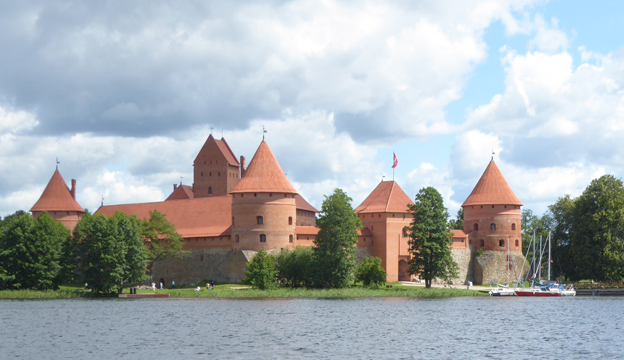
Trakai Castle Lithuania
Stockholm Archipelago
The Stockholm archipelago consists of 24,000 islands and there are yet more islands in Lake Mälaren which lies behind Stockholm. Sail on southwards to Mem and enter the Göa Canal and lakes to travel right across to Sweden’s west coast or continue southwards where there are the two large islands of Gotland and Öland and further south the Danish island of Bornholm.
From Falsterbo on Sweden’s south west tip either travel northwards along Sweden’s west coast or cross to Denmark. The capital, Copenhagen, is another must for visiting yachtsmen and has several yacht harbours.
Northwards the Swedish west coast has another archipelago – the Bohuslän coast – stretching to the Norwegian border. Visit Gothenburg and Trollhätte at the western end of the canal and lake system which crosses the entire country.
In a sea without tides there are controls on the discharge of effluent which is totally forbidden in the territorial and inland waterways of most countries. A holding tank is not obligatory for foreign flagged boats but should be considered essential. Shore facilities and pump out stations are available.
Yachting is immensely popular with the local population all around the Baltic and in Norway. There are many well established yacht clubs which welcome visitors. Chandlery stores can be found but business is increasingly moving on-line.
Each country produces charts of its own waters, mostly available as folios – “paper” charts are still produced and updated although electronic versions are also available.
CA produces country-specific Cruising Guides written by members well experienced in the particular country. Some of these are also available to non-members.
Baltic Section also looks after Iceland, Greenland, Faroe Islands and Jan Mayen and has a Cruising Guide specifically for this area (updated annually).
Pilot guides available from Imray:
